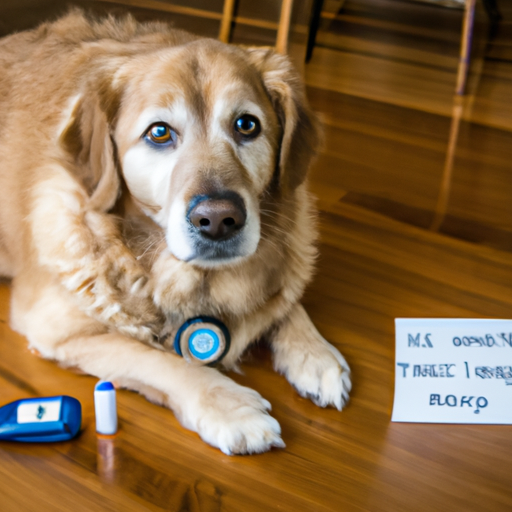As a caregiver to a furry friend, it’s important to be attuned to any changes in their behavior or health. One condition that can affect our canine companions is diabetes. In this article, we’re going to take an in-depth look at the symptoms of diabetes in dogs, and how you can manage this condition.
Understanding Diabetes in Dogs
Just like in humans, diabetes in dogs is a disease that affects how your dog’s body uses glucose, a sugar that is the main source of energy for the cells in the body. Dogs have two types of diabetes:
- Diabetes Mellitus: This is similar to type 1 and type 2 diabetes in humans.
- Diabetes Insipidus: This is a rare condition that involves the kidneys and the hormone that controls water absorption.
Recognizing the Symptoms of Diabetes in Dogs
Recognizing the symptoms of diabetes in dogs early can help in managing the condition effectively. Here are some signs you should look out for:
- Increased thirst and urination
- Unexplained weight loss
- Increased appetite
- Cloudy eyes (in dogs with diabetes mellitus)
- Chronic skin infections
| Symptoms | Explanation |
|---|---|
| Increased Thirst and Urination | As excess glucose builds up in your dog’s bloodstream, their body will try to flush it out through increased urination. This will lead to increased thirst. |
| Unexplained Weight Loss | Despite eating more, your dog may lose weight as their body starts breaking down fat and muscle for energy. |
| Increased Appetite | As the cells struggle to get glucose, your dog might feel constantly hungry. |
| Cloudy Eyes | Dogs with diabetes mellitus can develop cataracts. |
| Chronic Skin Infections | High blood sugar can weaken a dog’s ability to fight off infections. |
Diagnosing Diabetes in Dogs
If you notice any of the above symptoms, it’s important to bring your dog to the vet for a diagnosis. The vet will run a series of tests, including blood tests and urinalysis, to confirm the diagnosis of diabetes.
Managing Diabetes in Dogs
Managing diabetes in dogs involves consistent care and attention. Here are some ways to manage the condition:
- Regular Insulin Injections: Just like human diabetics, dogs with diabetes will often require daily insulin injections to regulate their blood sugar levels.
- Dietary Changes: Your vet may recommend a diet that is high in fiber and complex carbohydrates to help slow the absorption of glucose from the digestive system.
- Regular Exercise: Regular, consistent exercise can help to regulate your dog’s blood sugar levels.
Potential Complications of Diabetes in Dogs
If left untreated, diabetes can lead to a number of serious complications in dogs, including:
- Cataracts and blindness
- Kidney disease
- Nerve disorders
- Ketoacidosis, a potentially life-threatening condition
Preventing Diabetes in Dogs
While there’s no surefire way to prevent diabetes in dogs, maintaining a healthy weight and a balanced diet can reduce your dog’s risk. Regular vet check-ups are also crucial to catch any potential health issues early.
Frequently Asked Questions
Q: Can diabetes in dogs be cured?
A: While there’s no cure for diabetes, it can be managed effectively with the right treatment plan.
Q: Can dogs live a normal life with diabetes?
A: Yes, with proper management, dogs with diabetes can live a normal, healthy life.
Q: How often should a diabetic dog eat?
A: Diabetic dogs should eat a consistent, balanced diet with meals timed around their insulin injections.
Q: Can all breeds of dogs get diabetes?
A: Yes, all breeds can develop diabetes, but some breeds are more susceptible than others.
In conclusion, as a caregiver to a beloved pet, it’s important to know the signs and symptoms of conditions like diabetes. With proper care and management, your dog can live a happy and healthy life with diabetes.



